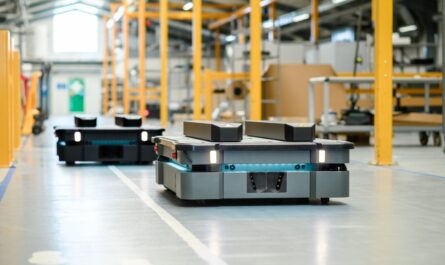
Businesses today operate in a highly dynamic environment with changing customer demands and disruptive technologies emerging at a rapid pace. To stay relevant and achieve sustainable growth, companies need to innovate constantly. However, constantly innovating can be challenging due to constraints like lack of resources, expertise and bandwidth. This is where Innovation as a Service (IaaS) comes into play. IaaS allows companies to leverage external innovation capabilities for developing new products, services and business models without having to build expensive internal R&D teams.
What is Innovation as a Service?
Understanding the IaaS Model
Innovation as a Service refers to the outsourcing of innovation needs to specialized third-party providers. These providers have the necessary skills, infrastructure and processes in place to help companies accelerate innovation in an efficient, cost-effective manner.
IaaS providers take on the role of an innovation partner, working closely with client organizations to identify opportunities, develop solutions and implement innovations. Key aspects of the IaaS model include:
– Idea generation: Providers help surface new ideas through techniques like design thinking, brainstorming workshops, customer insights analysis etc.
– Concept development: Ideas are refined and concepts are created along with minimal viable prototypes to test solutions.
– Product development: Selected concepts are developed into market-ready products/services through agile development methodologies.
– Implementation support: Partners assist with product launches, marketing support and business model refinement.
– Continuous innovation: Partners continuously scan the environment to identify new opportunities through open innovation networks.
By outsourcing innovation needs, companies can focus internal resources on core operations while still gaining access to specialized innovation capabilities. IaaS providers manage the end-to-end innovation process on behalf of clients.
Key Benefits of the Innovation as a Service Model
Access to Specialized Skills and Infrastructure
One of the key benefits of the IaaS model is access to specialized skills that most companies may not have in-house. Innovation requires cross-functional skills like design thinking, rapid prototyping, software development, data analytics etc. Building such capabilities organically requires huge investments which many companies cannot afford. IaaS providers have teams of designers, engineers, data scientists who continuously work on innovation projects.
They also have access to advanced infrastructure like prototyping labs, VR/AR systems and research facilities to test and refine new solutions. For example, an IaaS provider helped a traditional manufacturing client develop an IoT-based product monitoring system by leveraging its embedded systems and cloud engineering expertise.
Minimized Risks and Costs
When innovation is outsourced to IaaS partners, the associated risks and costs are significantly reduced for client companies. Innovation projects often fail without yielding any returns on investments made. However, with IaaS models, clients only pay for successful solutions.
If an idea fails to generate meaningful results during the testing phase, the provider bears the costs rather than the client company. Additionally, partners develop solutions iteratively through Agile methodologies which minimize risks of large failures. This makes innovation more affordable for even mid-sized companies.
Faster Time to Market
Time efficiency is another key benefit of IaaS models. Innovation cycles that earlier used to take 12-24 months can now be completed within 3-6 months. This is because partners work at an accelerated pace using Agile frameworks and have necessary infrastructure readily available.
Also, simultaneous development of multiple ideas and concepts allows evaluating solutions quickly to kill non-viable ones early. Faster innovation cycles help companies launch new offerings at a rapid pace to gain first-mover advantages. For example, a European energy company collaborated with an IaaS startup to develop and launch a smart energy solution for homes within 6 months.
Access to External Stimuli and Trends
Constantly scanning open innovation networks and external tech trends allows IaaS providers to surface disruptive ideas that clients may miss otherwise. Their innovation ecosystems comprising startups, academics & digital platforms provide a continuous stimuli for new opportunities.
Through such external connections, partners expose client organizations to emerging technologies like AI, IoT, blockchain at an early stage. They also bring regional/global best practices to the table. For instance, a leading US retailer engaged an IaaS provider to tap into its network of startups and develop AI-powered merchandising platforms.
In summary, the Innovation as a Service model offers businesses a compelling proposition to gain dedicated access to specialized innovation toolsets, skills and expertise at affordable costs without building such capabilities in-house. This external innovation partnerships are sure to reshape corporate innovation strategies in the coming years.
Key Challenges of Adopting Innovation as a Service
Cultural Misalignment
One of the key roadblocks in IaaS adoption is cultural misalignment between client organizations and partners. While partners follow agile, fail-fast models, clients often expect predictable outcomes. Innovation involves uncertainties which traditional corporate cultures are not comfortable with.
Letting go of control over innovation processes can also be challenging for many firms used to centralized decision making. Executives need to embrace change and be comfortable with idea collaboration for IaaS to succeed.
Client Disenchantment with Past Outsourcing
Past outsourcing failures still create skepticism towards the IaaS model for some firms. While IT outsourcing delivered cost savings, it also led to loss of technical expertise and control. Many see innovation as core which cannot be outsourced.
IaaS providers need to assure client confidentiality, build transparency and establish metrics to measure innovation outcomes to overcome such apprehensions. Close partnership models rather than pure outsourcing can help change perspectives.
Data Security and IP Concerns
When working with external partners, clients worry about protection of sensitive customer data and intellectual property (IP). Innovation requires open sharing and testing of ideas which many see risky without proper safeguards.
Providers need to showcase their data security certifications and contracts defining IP ownership to address these concerns. Multi-party innovation also necessitates complex legal contracting to clearly demarcate responsibilities of each entity involved.
In conclusion, the Innovation as a Service model represents a promising approach for businesses to break free from constraints and tap into on-demand innovation. While cultural challenges remain, evolving partner models focusing on transparency and alignment of goals/metrics can accelerate IaaS adoption. It is sure to emerge as a mainstream strategy for corporate innovation in coming years.
*Note:
- Source: Coherent Market Insights, Public sources, Desk research
- We have leveraged AI tools to mine information and compile it



